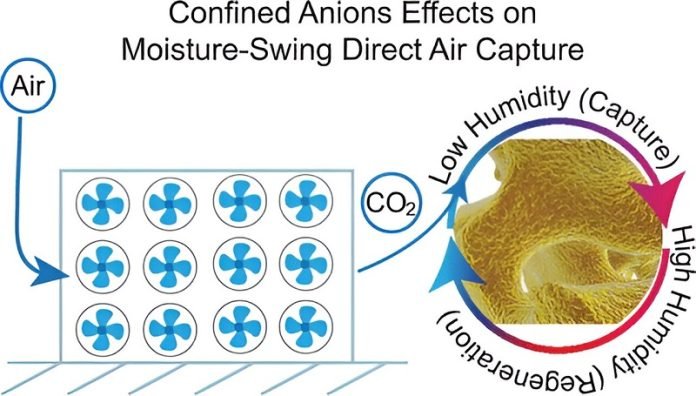
In a Princeton University lab, researchers have developed a groundbreaking material that can grab carbon dioxide (CO2) from the air by simply using changes in humidity.
This discovery could significantly reduce the energy needed for direct air capture technologies, which are key in fighting climate change by removing CO2 from the atmosphere.
Direct air capture is seen as a crucial tool in reducing global warming.
The U.S. Department of Energy is even investing $3.5 billion to set up direct air capture hubs.
However, the process has been criticized for being energy-hungry, mainly because pulling CO2 from the diluted air requires a lot of power, particularly for the step where captured CO2 is released for storage or use, known as regeneration.
Traditional methods need big shifts in temperature or pressure, consuming a lot of energy. But the Princeton team’s material changes the game by using humidity instead.
This approach dramatically lowers the energy required—from the equivalent of what a U.S. household uses in a month down to much less.
The secret lies in a special kind of resin filled with tiny pores that can capture or release CO2 when the humidity changes. These resins are affordable and widely used, which could make this solution easily scalable.
When the air is dry, the resin traps CO2. When it’s humid, the resin releases the CO2, ready to start the cycle over.
This “moisture swing” method requires far less energy, making it a breakthrough in carbon capture technology.
To make this work, the team tweaked the resin to capture more CO2 by adding certain charged particles like phosphate and carbonate.
They discovered that while small pores in the resin grab and hold CO2, larger pores help move water in and out quickly, boosting the rate at which CO2 can be captured and released.
This finding is a big deal because it means we might be able to use natural changes in humidity to help capture CO2 without needing extra energy.
Some places have natural cycles of dry and wet conditions, which could make them perfect for setting up this kind of carbon capture system.
Beyond cleaning the air of CO2, the science behind this material has broader implications. It could help in various industries, like energy storage, by making processes more efficient and less energy-intensive.
The team is still exploring how to best use this material, but its low energy requirement and use of cheap, common materials are promising signs for the future.
This work isn’t just about fighting climate change; it’s about smart science and innovation that can lead to more sustainable and energy-efficient solutions across the board.
As the research progresses, this humidity-driven approach could become a key player in global efforts to reduce carbon emissions and combat global warming.



